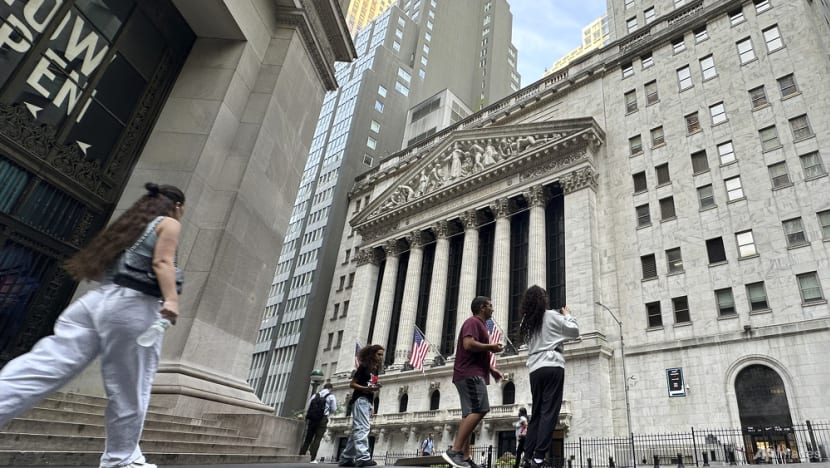Commentary: What it means for your stocks if the Fed starts cutting rates
Many are eager to see the Fed slash interest rates, expecting a market boom to follow. You’d do best to temper your expectations, says OCBC’s Samuel Wong.


This audio is generated by an AI tool.
SINGAPORE: Economists, investors and policymakers alike are all anticipating an impending interest rate cut from the United States Federal Reserve this week. The decision, if made, would come after the Fed raised interest rates 11 times in 16 months from March 2022 in an unprecedented run - an attempt to cool the pace of rising prices after the COVID-19 pandemic.
Now, some investors may view this as a cause for celebration and trigger a market rally. After all, lower interest rates translate to lowered cost of borrowing. This could encourage businesses to invest and stimulate growth in industries that require more capital investment.
WORDS OF CAUTION - THERE MAY NOT BE A MARKET RALLY
I hate to be the bearer of bad news but while an interest rate cut may signal that the market is stabilising. It does not, however, necessarily guarantee a market rally. At least, not right away.
First, the cut may not be significant. In fact, Minneapolis Fed President Neel Kashkari has downplayed the possibility of cuts larger than a quarter of a percentage point.
Second, it would likely take a series of cuts to truly give markets the momentum they need.
You may recall the rate cuts introduced by the Fed during the “Great Recession” from 2007 to 2009. Then, in response to the economic downturn, the Fed slashed rates seven times, going from 4.75 per cent at the end of 2007 to 2 per cent in September 2008.
Only six months later did the US S&P 500 really start experiencing gains of 304 per cent from March to December 2009. Why the time lag? It is likely that a series of cuts is required to offer certainty of the direction in which the markets are heading. Investors need that certainty.
Do not forget the elephant in the room: Inflation. The August 2024 consumer price index rose a paltry 0.2 per cent month over month and 2.5 per cent year-on-year. This marks the smallest annual increase since February 2021.
But overall inflation may continue to rise with ongoing geopolitical tensions that could impact the US. Unrest in the Middle East, for example, could disrupt oil supply and trade; and the ongoing war in Ukraine continues to disrupt global supply chains. The situation today is vastly different from that of the “Great Recession”, and we may not witness a recurrence of multiple interest rate cuts.
Then too, market growth may have reached its limits. The S&P 500 has surged since late October last year, with the market capitalisation increasing by close to 36 per cent, but it is likely that these gains have already reflected the anticipation for a rate cut.
A forecast compiled by Reuters from equity strategists, analysts, brokers, and portfolio managers between Aug 8 and Aug 20 suggests that the benchmark of the US S&P 500 will reach 5,600 points by the end of 2024.
Bear in mind that when the market closed on Sep 12, the S&P 500 was trading at 5,595 points. This implies a potential limited upside of only 0.089 per cent as compared to the golden number of 5,600 points that market watchers expect it to reach by the end of 2024.
PREPARING FOR A LOWER-INTEREST ENVIRONMENT
What happens now? Well, one should temper expectations for a significant market surge. Instead, keep your focus on specific sectors that may benefit from lower interest rates.
One sector to look out for is dividend-paying industries like utilities and real estate investment trusts (REITs). In a lower interest rate environment, the dividend yields of REITs become more appealing compared to other fixed income investments. This can attract investors seeking income-generating assets, potentially leading to increased demand and higher prices for REIT stocks.
Cyclical sectors, such as consumer discretionary and industrials, also tend to perform well when interest rates are lower. The reduced costs of borrowing make it advantageous for capital-intensive industries and those experiencing growth.
Consumer discretionary stocks, which include companies selling non-essential goods and services like automobiles and hotels, are particularly sensitive to changes in consumer spending. Lower interest rates typically encourage consumption as it becomes cheaper to borrow money, potentially boosting the performance of consumer discretionary stocks.
By evaluating such industries, the savvy investor can prepare for potential growth opportunities and potentially capitalise on the opportunities presented by a lower interest rate environment.
Samuel Wong is Trading Strategist at OCBC Securities.

















